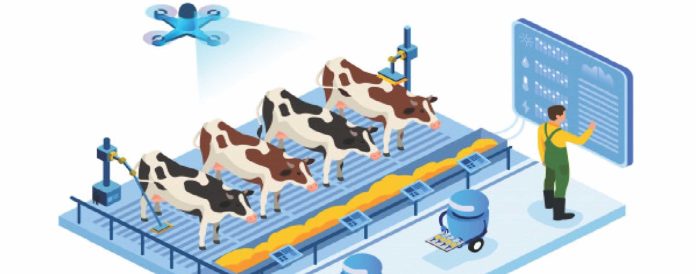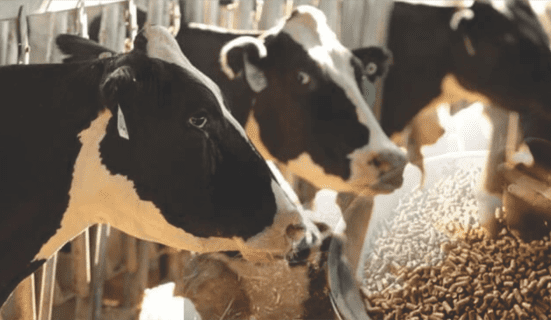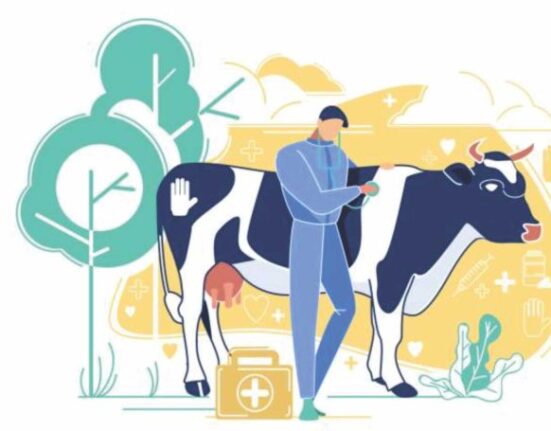 Think Grain Think Feed connected with seasoned dairy and poultry experts – Ranjith Mukundan and Dr. Sujit Kulkarni to understand the impact of Digitalization on the supply chain starting from genetics to processing to traceability. Below are the excerpts:
Think Grain Think Feed connected with seasoned dairy and poultry experts – Ranjith Mukundan and Dr. Sujit Kulkarni to understand the impact of Digitalization on the supply chain starting from genetics to processing to traceability. Below are the excerpts:
What is the need for Digitalisation in the Indian dairy industry?
Ranjith Mukundan: The dairy industry has been a very traditional industry that is highly fragmented. There are about 80 million dairy farming families, and by the headcount, it is almost the size of US population. In the last decades, they are virtually untouched by any technology mainly because they are small farmers with 2-3 animals who cannot afford any high-end technology.
Since our inception in 2011, we were clear that for any intervention in Indian dairy, the prime need is to support productivity, quality, and traceability. So, we started focusing on deploying technology like Internet of Things (IoT) at the farm, collection center, and chilling center and then analyzing the data to optimize the supply chain – productivity, quality, and traceability.
At present, there are 3.5 million farmers registered with our platform and we have our digital footprint in 41000 villages in India, and once this digital highway has been laid out in these villages, we are deploying additional value added services to the farmers like provide value-added market linkages, agro-inputs, financial services, insurance services, etc. hyper locally, in these villages.
How this technology is actually helping a small dairy farmer?
Ranjith Mukundan: We actually disseminate this information to various players in the ecosystem like veterinary doctors, Artificial Insemination technicians, nutrition experts, and also to our in-house Farm intervention services team (FIST). Say if peak ovulation is detected in an animal, then an alert is sent that an animal with XYZ id needs to be inseminated in the next 6-8 hours else the probability of success goes down, as the incentives are aligned to the success rate, the technician can’t ignore the alert. Moreover, because of the registration of a large number of farmers on the platform, more technicians are keen to register on the platform. Technicians are also benefitted, as they can access historical data stored on the platform for better diagnosis or treatment.
Another feature we are adding is to Uberize the technology, where multiple registered technicians will get an alert and anyone can act. In this way they can also increase their reach through this platform.
How does such technology help in tackling issues like Antibiotic Microbial Resistance (AMR)?
Once the dairy animal is infected (as per our understanding more than 75% of dairy animals in India have some level of mastitis) and is not treated at sub-clinical levels then it has to be given antibiotics, which if not quarantined for 21 days, produces milk with antibiotics. The very first approach of the farm intervention services team is to advise the farmer to avoid this infection by educating them about hygienic milking practices, hygienic animal husbandry practices, and providing preventive healthcare.
In India, the entire dairy ecosystem thrives on managing sickness management as opposed to preventive healthcare. With our services, we enable preventive healthcare, educate a farmer to treat animals at a subclinical level, and alternative medical treatment like using aloe vera.
The second is to test at an early stage i.e., at the farm level or milk collection level. There are following three levels of detection
1. Composition detection
2. Adulterant detection
3. Contaminant detection
Last but not least is to incentivize farmers to adopt the recommended healthy practices instead of paying as per the milk composition i.e., fat and SNF.
By adopting the above practices, one can reduce the contaminants on the supply side and on the consumer side, as a company we are working on traceability where the consumers can scan the KYM (Know Your Milk) QR code and understand what types of tests are done on milk before it reached the consumer.
Digitalization is a buzz term in India but agriculture or livestock is so far considered the last sector to adopt. What is your opinion on this?
Dr. Sujit Kulkarni: If we see the transition of the Indian Livestock Industry more specifically the Poultry sector, in the last two decades, we have observed significant improvement in genetics, feed mill technology, farm management, environment-controlled farming, etc. However, despite these developments, we are still very much dependent on traditional supply chain management of raw ingredients like Corn, Soy, Rice, etc. Along with advanced feed mill technology, feed millers are also using NIR (Near Infra-Red) technology to get more accuracy on nutrient analysis which helps a poultry nutritionist to optimize the feed cost with the least cost formulation. Balancing performance without much alteration in the formulation has always been a tough task for livestock nutritionists. But more analytical studies of various feed raw ingredients will help to use alternative ingredients when there is high volatility in prices of key ingredients like corn, soy, etc. These recently developed nutritional digital tools can produce highly balanced feed for better growth as well as better profitability for livestock farmers.
we have observed significant improvement in genetics, feed mill technology, farm management, environment-controlled farming, etc. However, despite these developments, we are still very much dependent on traditional supply chain management of raw ingredients like Corn, Soy, Rice, etc. Along with advanced feed mill technology, feed millers are also using NIR (Near Infra-Red) technology to get more accuracy on nutrient analysis which helps a poultry nutritionist to optimize the feed cost with the least cost formulation. Balancing performance without much alteration in the formulation has always been a tough task for livestock nutritionists. But more analytical studies of various feed raw ingredients will help to use alternative ingredients when there is high volatility in prices of key ingredients like corn, soy, etc. These recently developed nutritional digital tools can produce highly balanced feed for better growth as well as better profitability for livestock farmers.
You have been in the industry for more than two decades now, how have you seen technologies changing the Indian feed or poultry industry?
Dr. Sujit Kulkarni: I started my career in a semi-automatic pellet feed mill that required more manpower, the scenario has completely changed in the last decade or so where most of the new feed mills are fully automatic with the least manpower requirement. The adoption of storage silos for feed raw material storage is another good practice by Indian Poultry Industry.
Along with advanced feed mill technology, there has been improvement in genetics, usage of raw material analytics in feed formulation, etc. such practices have resulted in reaching the best FCR, EPBF, etc. At the beginning of 2000,an FCR of 2 and EPBF index of 250-300 was considered to be good whereas at present poultry production has reached an FCR of 1.45-1.55 and EPBF of 400-500.
Can you share some of the tools that can further revolutionize the Indian feed industry and how?
Dr. Sujit Kulkarni: Yes, there are various tools and services offered by different companies which help in the precise evaluation of raw materials and finished feed. At Adisseo, we offer Precise Nutritional Evaluation(PNE) Services for the last 25 years, more than 2 million yearly analyses are carried out with a wide variety of raw materials. It gives real-time, accurate, and decisive results. There is another tool that provides anti-nutritional values in raw materials and using this data one can make the best use of enzymes. Then there is a recently launched app where nutritionists can use Net Energy in feed formulations. Apart from these tools, there are other apps to check gut health and monitor the digestive performance of the flocks. These AI-enabled tools can bring a nutritional digital revolution.







